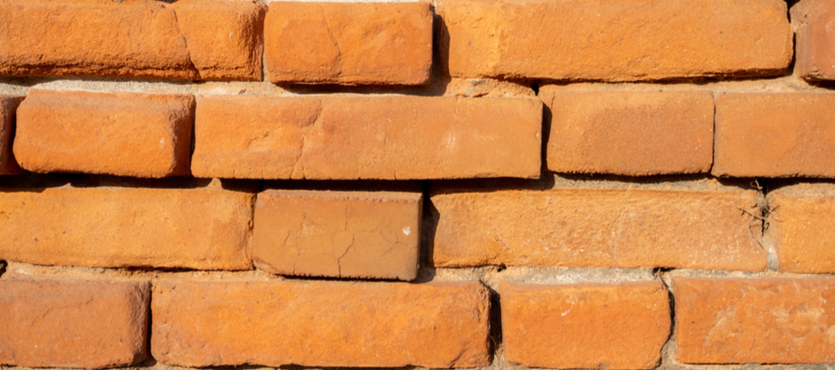A common occurrence in brick or stone masonry, bulging or bowed bricks are causes when water makes its way though the mortar into the wall. The water then expands causing bulges or bows. Another cause of bulging or bowed bricks is rusting anchors which results in a wall loosening from the structure. Bulges and bows are most commonly seen when winter is over and require repair by a professional mason to avoid detachment from or collapse of the structure.
The Cause of Bulging Brick
As mentioned, water is the underlying cause of bulging brick. It can be the result of excess humidity in the walls, which cause the formation of ice during the cold winter months. It may be caused by water seeping in through damaged mortar joints or rusting anchors. Cracks in the wall can also cause budging by allowing water, snow, or ice to creep in, accumulate, and weaken the wall.
Identifying Bulging or Bowed Brick
Bulging or bowed brick appears as though the brick or stone wall is swelling. It can also manifest with windows which are no longer level with the brick and appear higher than before. When this is noted the entire façade should checked carefully, preferably by a knowledgeable mason who can diagnose the extent of the issues and provide advice on the needed repairs to prevent the problem from worsening. Fluctuating temperatures can exacerbate brick problems, so always be aware of any changes to your walls during seasonal changes (freeze/thaw periods) to avoid falling bricks. It is important to note that bulging bricks should be repaired as quickly as possible quickly by professional masonry contractor in order to avoid more extensive, and dangerous issues such as a wall collapse.
Can You Prevent Bulging Bricks?
You can help prevent bulging bricks by closely examining masonry walls for crumbling joints or cracking mortar. Masonry walls, both brick and stone, are built to breath, allowing air through, but should never allow water behind them. In dry weather conditions when water makes its way in it evaporates. This is not the case in colder temperatures or fluctuating temperatures where water which gets inside can freeze and thaw causing unwanted damage. The simplest way to prevent bulging or bowed bricks is to have cracks and crevices, as well as crumbling masonry joints repaired quickly so water does not make its way in and cause greater damage.
You may have heard painting/waterproofing your wall can help, but not only does it prevent water from getting in, but it also prevents the desired evaporation and may result in even greater damage to your wall and the structure as well.
Repairing Bulging or Bowed Brick
The process and cost involved in repairing damaged brick varies depending on the extend of the damage, where the wall is located, how accessible the damage is, the type of brick, and other factors. If the bulging can be repaired, the cost will be lower than if the brick must be replaced. Likewise, repointing will cost less than bulging brick repair or replacement. Repairs aren’t always possible and depend on the damage to rest of the wall, in which case restoration will be required.
In some cases, repairs to bulging brick can be simple, such as injecting grout behind the wall, thereby strengthening the wall, filling in damage mortar, and preventing further bowing. In other instances, special screws or metal plates can be added for additional support. The problem is these are often only temporary solutions.
When the problem is more severe, bricks may need to be reinstalled or the entire wall may require replacement. Only a trusted masonry professional can tell you what is best for your wall and your overall structure. With the issue of bulging brick, waiting will only make the issue worse, so call on the professionals at Turnbull Masonry at the first sign of bulging or bowed bricks and get your repairs or replacement done right.

